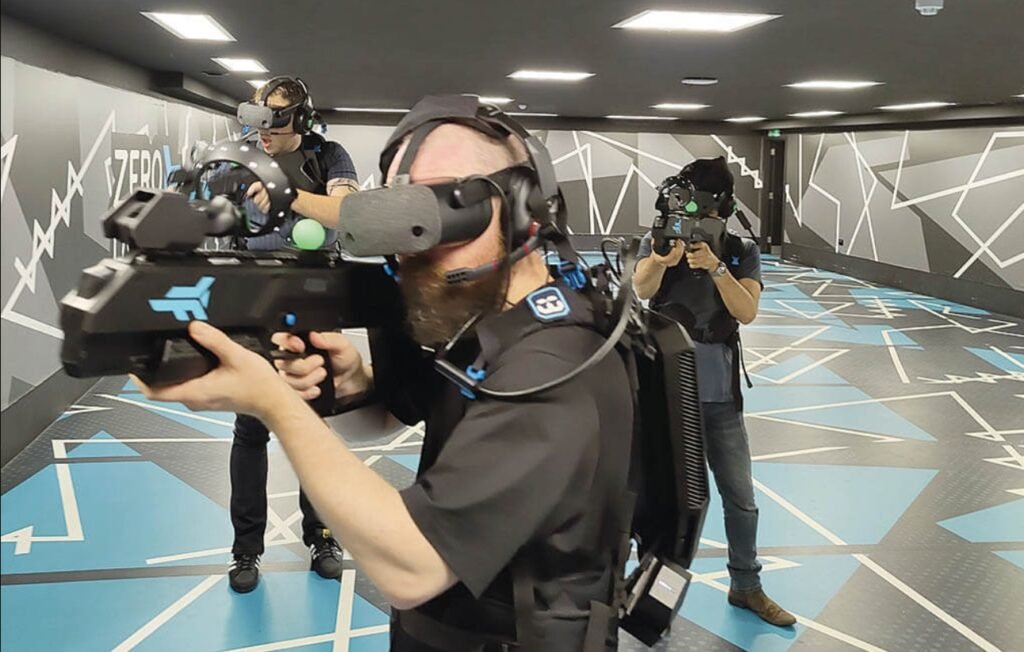The buzz around large-scale, location-based VR (LBVR) experiences in China may have cooled slightly from its 2024 peak, but the sector is showing clear signs of maturation in early 2025. According to industry reports, content quality and vendor professionalism are generally on the rise. However, this progress is happening against a backdrop of intense competition – often referred to locally as “involution” (内卷) – declining mall traffic, and a challenging search for unique experiences, forcing operators to adapt quickly.
Content Gets More Professional, But Differentiation Shrinks
A notable positive trend is the improvement in VR content quality. Many new large-space experiences launched since the beginning of 2025 demonstrate more sophisticated storytelling and overall production value compared to last year. While experiences rooted in Chinese culture and history remain popular, providers are broadening their horizons, exploring classic IPs like the Monkey King (悟空), ancient myths (封神), and even international blockbusters like Titanic.
However, challenges persist. One vendor lamented to VR Gyro that “market differentiation is decreasing.” While overall quality is up, some larger-scale productions reportedly still lack finesse compared to more focused, smaller-themed experiences. Furthermore, some operators continue to prioritize volume over refinement, adopting aggressive, quantity-driven strategies. The struggle to find truly novel content ideas is significant, with one source comparing it to writing movie scripts without novelists – leading some larger players to establish dedicated market research teams just to scout for fresh concepts.

Location Strategy Shifts: Malls Out, Scenic Spots & Cinemas In?
Perhaps the most significant shift is in location strategy. With shopping mall economy declining, many LBVR operators are finding malls less reliable. While weekends might see more visitors, converting them into paying customers for VR experiences is proving difficult, especially at higher price points.
As a result, tourist attractions and scenic spots are emerging as the preferred venues. These locations generally boast higher, more consistent foot traffic with visitors often more willing to pay for unique entertainment. However, setting up in scenic spots involves higher costs and complex logistical hurdles, demanding strong execution from the operating teams.
Within malls, the trend is skewing towards experiences targeting younger audiences, who show a greater willingness to try new things. But this comes with a trade-off: price points must remain low, often around 60 RMB (approx. $8-9 USD) or even less – sometimes cheaper than a standard 2D movie ticket – requiring a high-volume model for profitability. Interestingly, one vendor noted such experiences might be more popular in second-tier cities than top-tier hubs, citing sell-out crowds during the Chinese New Year holiday (though acknowledging this is a peak period).
A new potential frontier is also emerging: cinemas. The report highlights a partnership between large-space brand Youmu (位形空间) and Poly Cinema to establish a 100+ square meter VR experience zone within a cinema in Shenzhen, potentially pioneering new entertainment formats and business models. This diversification is crucial as the domestic market, unlike some overseas models (e.g., Sandbox VR), still needs time to build a broad user base comfortable with paying for premium VR experiences in typical mall settings.

Market Pressures: Price Wars and Rising Costs
The “involution” is palpable in pricing. Intense competition, particularly in second- and third-tier cities, has driven ticket prices down significantly. While low prices might attract volume in these markets, profitability becomes a major challenge.
Operators face a squeeze: low ticket prices on one end, and rising costs on the other. Expenses for venue decoration, staffing, and crucially, marketing, add up. The old adage “good wine sells itself” no longer holds true; effective promotion is essential to stand out, adding a significant cost burden, especially for smaller players. As one source calculated, after all costs are factored in, operators might find profits are minimal despite the hard work.
To escape the homogenization trap, some larger vendors are building expansive, multi-functional entertainment venues (over 1000, sometimes 3000+ square meters) featuring leisure areas, merchandise zones, and multiple experiences. This creates differentiation but raises the barrier to entry even higher for smaller competitors.
Seeking Renewal in a Tough Market
China’s large-space VR market in 2025 is clearly in a dynamic, challenging phase. While the technology matures and content quality improves, operators are battling intense competition, price pressures, and the fundamental difficulty of creating consistently compelling, unique experiences. The shift towards scenic spots and experiments with cinema integration reflect an industry actively searching for sustainable models beyond the struggling mall environment. Success will likely require a combination of innovative content, smart location strategies, and efficient operations to navigate the tough competitive landscape.



